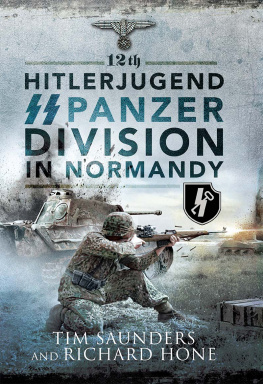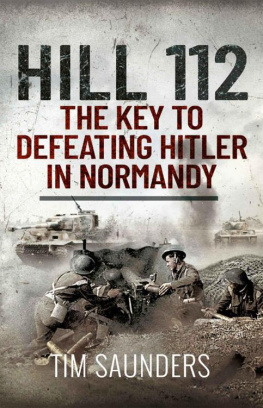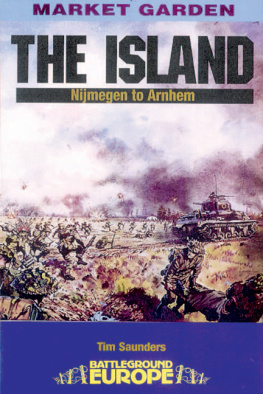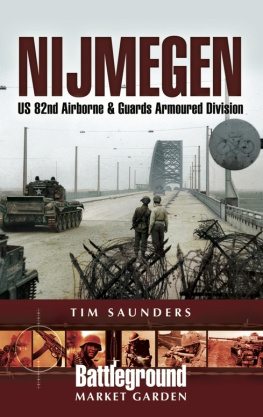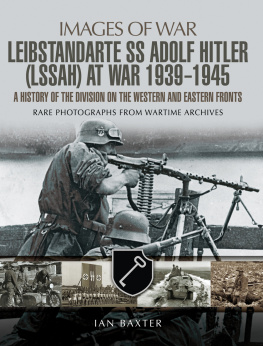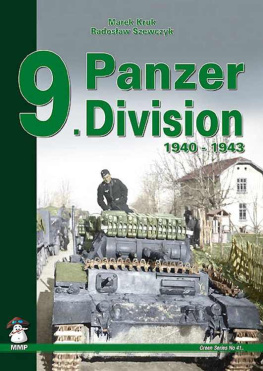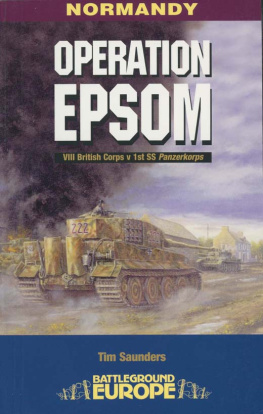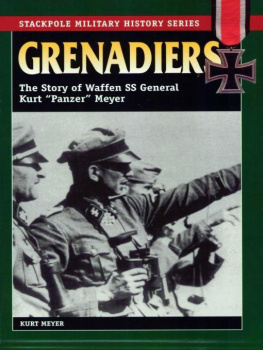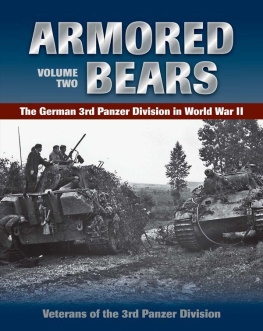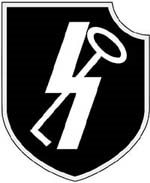
12th Hitlerjugend
SS Panzer Division
in Normandy
12th Hitlerjugend SS Panzer Division in Normandy
Tim Saunders
&
Richard Hone
First published in Great Britain in 2021 by
PEN & SWORD MILITARY
An imprint of
Pen & Sword Books Ltd
47 Church Street
Barnsley
South Yorkshire
S70 2AS
Copyright Tim Saunders and Richard Hone, 2021
ISBN 978-1-52675-736-4
ePUB ISBN 978-1-52675-737-1
Mobi ISBN 978-1-52675-738-8
The right of Tim Saunders and Richard Hone to be identified as the authors of this work has been asserted by them in accordance with the Copyright, Designs and Patents Act 1988.
A CIP catalogue record for this book is available from the British Library.
All rights reserved. No part of this book may be reproduced or transmitted in any form or by any means, electronic or mechanical including photocopying, recording or by any information storage and retrieval system, without permission from the Publisher in writing.
Pen & Sword Books Limited incorporates the imprints of Atlas, Archaeology, Aviation, Discovery, Family History, Fiction, History, Maritime, Military, Military Classics, Politics, Select, Transport, True Crime, Air World, Frontline Publishing, Leo Cooper, Remember When, Seaforth Publishing, The Praetorian Press, Wharncliffe Local History, Wharncliffe Transport, Wharncliffe True Crime and White Owl.
For a complete list of Pen & Sword titles please contact
PEN & SWORD BOOKS LIMITED
47 Church Street, Barnsley, South Yorkshire, S70 2AS, England
E-mail:
Website: www.pen-and-sword.co.uk

Hubert Meyers memorabilia in front of a photograph of him as a junior officer on duty at Berchtesgaden in the mid-1930s. From the left: German Cross in Gold, Russia medal winter 41/42 (Order of the Frozen Feet), Black Wound badge, Iron Cross First Class, Obersturmbannfhrer shoulder boards and cuff titles for both the Leibstandarte and the Hitlerjugend .
Introduction
The 12th Hitlerjugend SS Panzer Division was the Second British and First Canadian armys most intractable and undoubtedly determined enemy, fighting them throughout the campaign from D+1 to the final breakout from the Falaise Pocket. Many an Allied veteran admitted loathing the Hitlerjugend s brutal and fanatical young soldiers, others said that they feared fighting the divisions youths who were prepared to sacrifice themselves for their cause, while some, with the benefit of hindsight, voiced a grudging respect for their implacable opponents.
There is very little in English print in any detail on the 12th Hitlerjugend SS Panzer Division as a whole, other than the late Hubert Meyers outstanding history. As 1a (chief of staff) of the division, he and his contributors were primarily relying on memory and allied accounts of their battles and, as he mentioned in the foreword to his history, it was written at a time when there was scant documentary evidence from the divisions records available. Since he was writing in the seventies, however, a considerable amount of the missing material has been located in archives, much of it in Eastern Europe. This book makes full use of the newly-available material.
Placing ones self in the boots of a Hitlerjugend soldier is to appreciate the range of difficulties and disadvantages that the Germans laboured under during the Normandy campaign. The list of these is long, starting with Allied material superiority in virtually every area, which led to the crushing weight of fire power the Hitlerjugend had to endure, through to a paucity of food and a lack of relief from the front line. Under these circumstances it is a remarkable fact that the Hitlerjugend remained an effective fighting force even when reduced to a small kampfgruppe at the end of the Battle of the Falaise Pocket.
Acknowledgements
Our first thanks must go to Patrick Hinchy for setting up the interview with his father-in-law Hubert Meyer. In granting the authors an interview, the divisions chief of staff in Normandy said that he trusted us as honourable [former] members of the British Army and that we would not set out to either glorify or vilify the Hitlerjugend , in the way so many others have in the past. In writing this book we stand by our promise to Hubert Meyer and have sought to be thoroughly objective and will not shrink from not only covering the divisions undoubted military achievements on the one hand, and fully confronting what are hard and unpleasant facts readers will of course make their own judgements.
We would like to thank Lieutenant Colonel (Retd) James Porter for his advice on naval bombardment of inland targets, in particular regarding the death of Fritz Witt in the outskirts of Caen on 14 June. On a related subject thanks are due to Major Mike Peters who educated us over the years on the role of air observation post squadrons of the Army and Royal Air Force. It is only placed in German boots that we fully appreciated Hitlers error in fighting within range of naval gunfire and the effect it had on the German soldier.
Maps are an essential element to any military history, and we are grateful to the various archives particularly in the US and Canada that make copies of the maps used during the Normandy campaign freely available. These maps in various scales undoubtedly help with understanding the various actions and are an aid for those who tramp the fields of Normandy today to locate the scene of the fighting described in this volume.
As usual Pen & Swords team Heather Williams, Matt Jones, Pamela Covey, Noel Sadler and Tara Moran have worked hard to turn our manuscript into a very good looking book and our unreserved thanks are due to them.
Tim Saunders and Richard Hone
Warminster
January 2021
Chapter One
Raising and Training the Division
There was and is, of course, nothing particularly new or unusual about the employment of young soldiers; it has happened in virtually all armies and in all ages. Indeed, Germany had in 1914 raised divisions of pre-conscription-age volunteer youths and students, which were officered by reservists whose service was many years out of date. These hastily trained formations were committed to battle at Ypres in late October where they came up against hard-bitten British regular army soldiers in the fields north of Langemarck and suffered heavy casualties in what became known as the Kindermort or Massacre of the Innocents.
Later in the war the 238th Division, for example, was raised in early 1917 at Lockstedt Kasserne north of Hamburg. Young soldiers, conscripts from the 1898 and 1899 class, were provided with a handful of officers and NCOs returning from convalescence. This division was subsequently committed to battle on the Western Front with the majority of its soldiers still only aged between 17 and 19. As we will see, memory of these and other incidents had an impact on the formation of the Hitlerjugend Division thirty years later.

